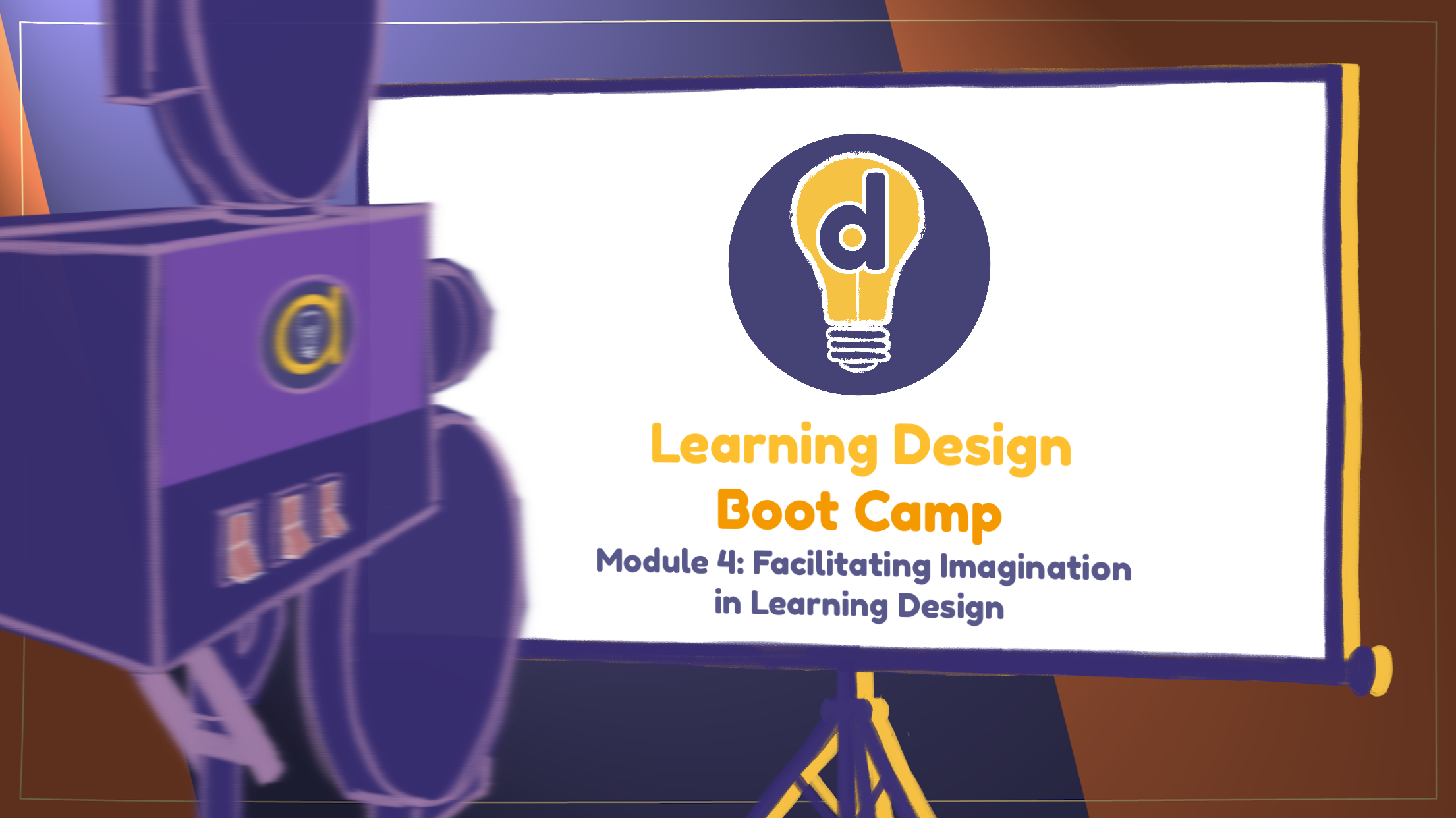Facilitating imagination in learning design
When we’re designing a learning experience, it’s very important that learners can imagine the learning goal.
When the learning goal is clearly visible, learners can see why what they’re learning is important. It’s the bit in discovery learning about producing motivation by engaging learners’ ‘predisposition to learn’. If learners understand ‘why’ they’re learning something, they are much more likely to engage with the content and activities. But you’d be surprised how often learners don’t know why they’re learning something.
I’d like to introduce you to Professor Constance Steinkuehler, who is an expert on how online gaming can produce transformative learning experiences. Professor Steinkuehler was a guest on our podcast, and the Ding-O-Meter got very excited when she explained what learning designers can learn from games design. In the podcast, Professor Steinkuehler explains the importance of ensuring the learning goal is clear at all times.
Professor Steinkuehler also provided a valuable insight into how online games enable learners to learn without realising it. This might sound obvious, but imagine for a moment what happens when you’re playing a game. You take on the role of a character, and that character has a clearly defined goal. The goal might be to slay the dragon at the end of the level, or win the grand prix, or solve the mystery.
The important thing is this: taking on the role of a character activates your imagination. It enables you to pretend you are somebody else. Kids do this all the time – they pretend to be superheroes, or princesses, or kings and queens. And this enables them to use their imagination to invent scenarios where they can convince themselves that they can do a whole range of things.
_
Creating scenarios
The power of harnessing imagination in learning design is not to be underestimated. One way we can harness imagination in learning design is to create scenarios for learners. Scenarios enable learners to see why the thing they’re learning about is useful, and how it might be used in real life. Let’s look at how this works in practice.
Imagine you’ve decided to take a course in data analysis. For one of the activities, you are given two Excel spreadsheets, one containing data about washing machine sales, and the other about repair costs. Your task is to compare the total sales per month with the total cost of repairs per month so you can learn about data analysis. That’s a pretty straightforward activity. But it’s really boring.
Now imagine you’re a freelance data specialist working for a company called PlanetWash. PlanetWash are a startup business whose mission is to achieve Net Zero emissions in the washing machine industry by 2030. They’re passionate about what they do, and they’ve got a snazzy logo too. Your boss, Angeliki, has asked you to go with her to an energy conference in Switzerland and present to business leaders about how increasing washing machine repairs is not only good for business, it’s good for the planet too. If you can make a compelling case, you might just be able to shift the industry towards more sustainable practices. While you’re on the train to Switzerland (because planes aren’t good for the environment), you find yourself sat next to another conference delegate called Reena whose company has invented a super efficient washing machine motor. She has data that could revolutionise the repairs industry, and she’s asked you to take a look at it…
Both these scenarios achieve the same thing: they teach the learner about data analysis. But which one is more likely to engage the learner and make them want to complete the task?
This is why harnessing learners’ imagination is such a powerful technique in learning design.

